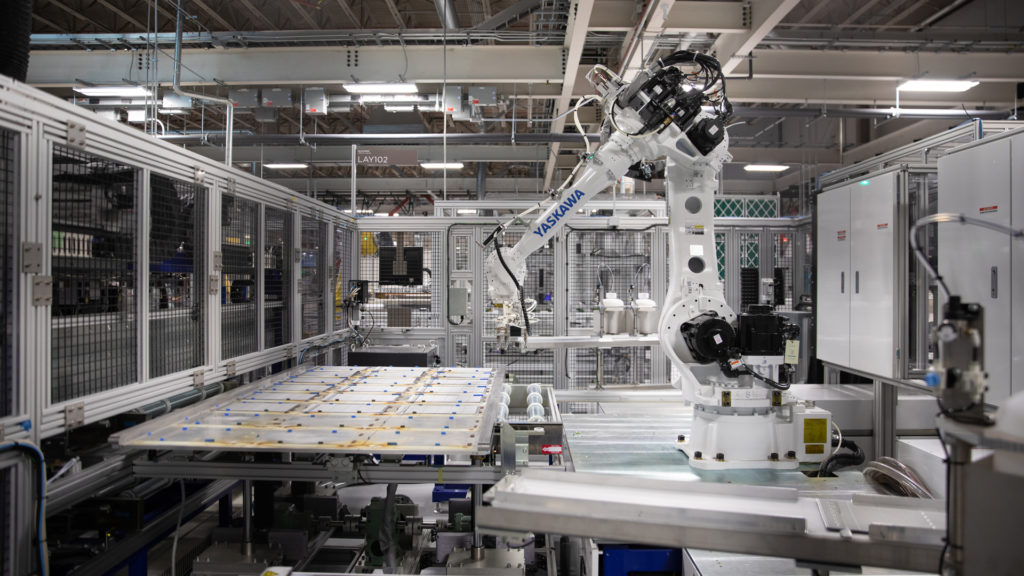Last updated on April 22nd, 2020 at 11:33 am
A team of researchers from Pennsylvania State University in the United States have found a method to enable lithium-ion based batteries to reach an 80% charge in under ten minutes. That's roughly 200 miles of driving range – brilliant.
Charging times and driving range are the biggest deterring factors for naysayers. How many times have you heard: “An electric vehicle takes forever to charge; I can't drive up and down the country on a single charge; I don't want to waste time waiting at a charging point”. That's what Chao-Yang Wang and his team from the Department of Mechanical Engineering at Pennsylvania State University are trying to overcome. By developing methods of fast-charging for high-capacity battery packs, an EV could potentially outlast a gasoline-led vehicle and also be extremely efficient in retaining charge.
What does the research suggest?
Chao-Yang Wang and his team found that by using an asymmetric temperature modulation (ATM) method to heat the Li-ion cells to 60°C, it would eliminate Li plating (the result of lithium ions moving rapidly from the positive electrode to the negative one) and prevent severe solid-electrolyte-interphase (EMI) growth (in other words, capacity loss); ultimately it allows the battery cells to accept around 400kW of power and limits the degradation to only 0.1% of the lifetime of a battery-operated electric vehicle (BEV).
Li plating causes battery degradation, and with a short burst of heat at 60°C, the battery cells are able to recharge through 2,500 cycles without suffering from too much degradation; according to the researchers, that's the equivalent of 14 years of use or around 500,000 miles of driving: “With the remarkable high-temperature stability, the BEV cell with ATM retains 91.7% of its initial capacity after 2,500 cycles of 6 C charge to 80% SOC”
The same tests were carried out at different temperatures, too. “By modulating cell temperature to charge at 60°C and discharge at around RT, the cells sustained 1,700 cycles of 6 C charge to 80% state of charge (SOC) at 20% capacity loss. For comparison, a control cell charged with 6 C directly at RT only survived 60 cycles.”
“The control cell without a preheating step lost 20% capacity in only 60 XFC cycles. With the increase of the charge temperature, the cycle life at 20% capacity loss increased to 380 cycles at 40°C, 1,000 cycles at 49°C, and 1,700 cycles at 60°C.”
(A and B) Evolutions of (A) cell voltage, and (B) cell temperature, in the CCCV (6 C, 4.2 V) charging process at an average charge temperature of 26°C, 40°C, 49°C, and 60°C, respectively. All the four PHEV cells were tested at an ambient temperature of ∼20°C. The heated CCCV cells have a heating step before the CCCV charging. Different cooling conditions were applied to keep a relatively constant temperature during charging.
(C) Variation of the average heat generation rate in the charging process of the four PHEV cells and the required cooling need to balance the heat generation.
(D) Total energy loss to heat of the above four cells during the heating and charging processes. The four cells are the PHEV cells
Why is this research being carried out?
Other than wanting to explore new methods of charging, this research also stems from the US Department of Energy's (DOE) goal of developing extreme fast charging (XFC) technology. The DOE wants EVs to have a driving range of around 200 miles with a short 10-minute charge – Chao-Yang Wang and his team might have cracked it in the labs, but will these methods work in every-day scenarios and more so, be easy for consumers to operate? Chao-Yang Wang certainly thinks so, and thus we're excited to see what his research brings to the world of battery cell technology. You can read his paper, here.
What do you make of this breakthrough: is this the type of news you were waiting for before considering a new EV? Let us know in the comments section, below.
